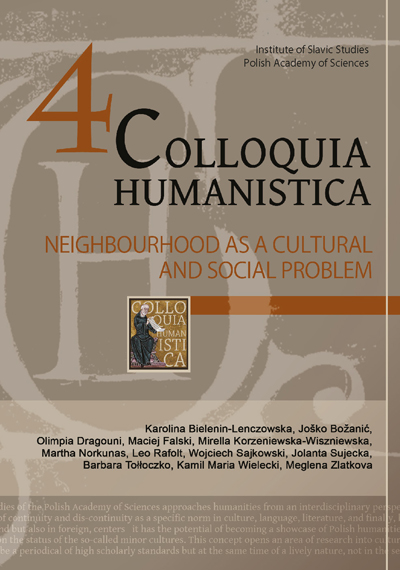Neighbourhood of the City and the Provinces in Dalmatia in the Light of Chosen Examples of Early Modern French Travel Literature
Neighbourhood of the City and the Provinces in Dalmatia in the Light of Chosen Examples of Early Modern French Travel Literature
Author(s): Wojciech SajkowskiSubject(s): Language and Literature Studies, Studies of Literature, French Literature
Published by: Instytut Slawistyki Polskiej Akademii Nauk
Keywords: Dalmati;, Enlightenment; travelogue; Morlachs; Balkans; city; provinces
Summary/Abstract: In early modern period, Dalmatia was a region which was culturally diversified. Such cities as Zadar or Split were centres of Italian culture, while the provinces were a part of the Slavic world. Their location on the route to Turkey made them a frequent stop for French travellers, including (1675) or Louis-François Cassas (1782), whose testimonies became a basis for printed publications. In their testimonies, readers could find information about Dalmatian cities and provinces, and the differences between then. The latter issue is an important, yet often neglected addition to the discussion on the shaping of the image of the Balkans. In this study, I concentrate on this French approach to this problem, because it can be considered as representative for other Western European perspectives. The French look at the issue of neighbourhood of the city and the provinces was characterized by a distance, which is rarely found in Venetian sources. The wide chronologic scope of the study will allow to show changes which occurred in the French image of Dalmatia during the age of Enlightenment. The paper tries to analyse the travel literature focusing on how it portrays the neighbourhood of the city and the provinces in Dalmatia and demonstrates that this image combined two perspectives. The first related to the neighbourhood of the sophisticated Italian culture (synonymous with the city) and the provinces, equated mostly with the Slavic world, which was little known in the West. The second perspective, which appeared in the second half of the eighteenth century, dealt with these relationships in the wider context of the neighbourhood of civilization and backwardness.
Journal: Colloquia Humanistica
- Issue Year: 2015
- Issue No: 4
- Page Range: 83-93
- Page Count: 11
- Language: English

